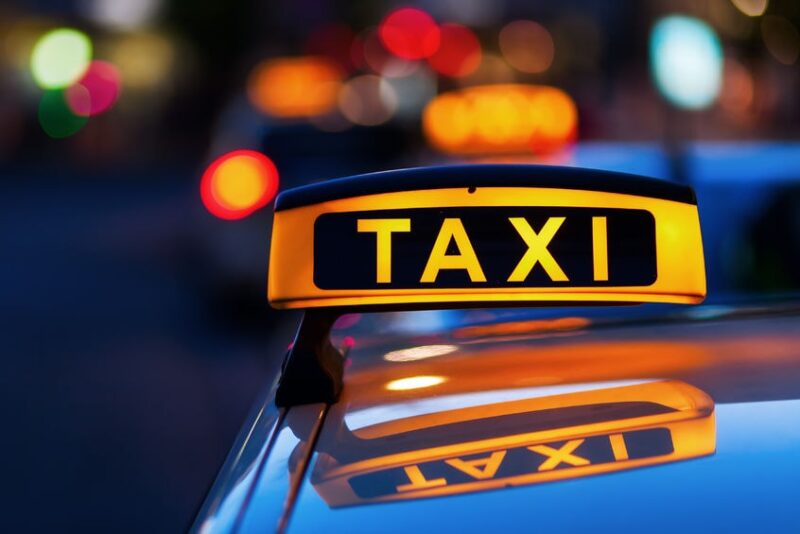We know that it may sound a bit absurd and shocking to you but in reality, apart from being called an Uber/Lyft driver, you are also known as a business owner. It’s as such in the judgement of the IRS which see you as an independent contractor and proprietor. Now that it’s established that you’re a business owner then, your also liable to pay for taxes through Uber tax form.
The basic question now arrives is that what should be our primary step? Well, firstly, during the tax time, you need to report all your income without any mistakes. Also, while doing that, keep in mind that you maximize your deductions too.
However, if you’re a new independent contractor then, you should look out for these tax mistakes while you fill out an Uber tax form.
TAKING THE STANDARD MILEAGE DEDUCTION WITHOUT CALCULATING YOUR ACTUAL VEHICLE EXPENSES
Contents
- 1 TAKING THE STANDARD MILEAGE DEDUCTION WITHOUT CALCULATING YOUR ACTUAL VEHICLE EXPENSES
- 2 DRIVERS TRY TO DEDUCT PERSONAL EXPENSES
- 3 FORGETTING TO TRACK YOUR MILEAGE
- 4 UNDERESTIMATING YOUR TAX PREP COSTS FOR THE FIRST YEAR
- 5 NOT DEDUCTING ENOUGH MILES OR DEDUCTING TOO MANY
- 6 DRIVERS DOUBLE DEDUCT VEHICLE EXPENSES
- 7 DRIVERS AREN’T PREPARED WHEN THEY START FILING
- 8 INCORRECTLY DECLARING YOUR INCOME
- 9 FAILING TO FILE YOUR TAXES
Vehicle expenses is the primitive deduction that Uber/Lyft driver look out for when they’re filing for Uber tax form. The two ways to calculate and deduct your vehicle expenses are:
Standard mileage deduction (SMD):
This deduction includes all vehicle related expenses such as:
- Repairs.
- Maintenance.
- Fuel.
Actual vehicle expenses (AVE):
Many drivers believe that SMD is higher than AVE. However, the reverse scenario is also possible but most of the drivers fail to analyse it. As a matter of fact, if you calculate your AVE without calculating SMD, then you would be doing a huge mistake.
AVE may surpass SMD if:
- There’re heavy repairs involved and you’re obliged to pay for them.
- You’re driving an expensive truck or van.
However, if your vehicle expenses are very high in the given year then, it’s better not to calculate SMD.
How to avoid such a mistake:
With care and ease, summit all your vehicle related expenses and business related miles throughout the year. Using software like Quickbooks Self-Employed, you can easily manage your vehicle related expenses. Compare your both the SMD and AVE at last ans whosoever is greater, opt the one for the deduction.
DRIVERS TRY TO DEDUCT PERSONAL EXPENSES
There’re certain expenses which are deductible but not in the business expense such as:
- Charitable contributions.
- Student loan interest.
- Health insurance.
There’re a lot of deductions that you can look out for as a taxpayer but counting every expense on your Schedule C against your rideshare income is not a very good idea. This mistake may land you in big trouble.
For example: The Self-Employed may be able to deduct the cost of their health insurance premiums. This deduction is taken on your Uber tax form 1040. Placing the deduction in the wrong category can cause problems. Always keep in mind to place your personal expenses in the Uber tax form 1040.
FORGETTING TO TRACK YOUR MILEAGE
Now you know SMD is the best source of deductions for the Uber/Lyft drivers. However, if you simply outline your mileage number without putting any logs then, you might land yourself in a big blunder. Especially when IRS is auditing your tax file because you can’t trust upon the mileage numbers that are send by Uber /Lyft. It’s because Uber/Lyft don’t count all the miles that might be important for deduction purposes. Therefore, it’s wise to place your own miles.
How to avoid this mistake:
Through Stride Tax app, you can easily track and classify your mileage.
UNDERESTIMATING YOUR TAX PREP COSTS FOR THE FIRST YEAR
On internet, you’ll find several different types of a particular tax filing software that you can utilize. However, they usually demand a price for their product depending upon the Uber tax forms that you need to report.
Being a rideshare driver, in order to report your income and expense, you always have to file a Schedule C. Howbeit, if you’re associated with Self-Employed, then you may have to pay extra to tax prep companies. Though this extra payment is covered as a business expense in the following year, still it’s an extra penance to the wallets.
For example: For using TurboTax Self-Employed, you need to pay around $80.
Furthermore, during the tax season, try to avoid sticker shock because you’ve to pay extra money in order to report your rideshare earnings.
NOT DEDUCTING ENOUGH MILES OR DEDUCTING TOO MANY
Uber/Lyft will always dictate the miles that you drove while you’re logged into the driver mode. However, tax savings need the miles that you actually drove for deduction purposes. According to CPA and online tax resources, these miles are:
- the miles you drove with your passengers,
- miles driven during the shifts,
- some other commuting miles.
Therefore, one should never rely on the mileage information relaid by Uber/Lyft.
Howbeit, too much of everything is not good for health. Likewise, deduction of too much of miles is also another mistake that you can conduct while you report for Uber tax form. This mistake would get back at you while you’re being audited by IRS.
How to avoid this mistake:
As discussed above, place your logs in Stride Tax to carefully log and classify your mileage for deduction.
DRIVERS DOUBLE DEDUCT VEHICLE EXPENSES
Deduction in your mileage means multiplication of the number of business miles that you’ve driven by the standard mileage rate which is 53.5 cents per mile in 2017. The standard mileage rate is created by IRS by taking the following into the account:
- Average costs of the car insurance.
- Maintenance.
- Car payments.
- Depreciation.
- Gas.
Following these, IRS has created an average amount that drivers can use for deduction purposes for every business mile they drive.
Furthermore, by keeping a rack of your mileage will really save your time as your mileage log will always be updated and is a process far more easier than keeping track of all the expenses that go into the standard mileage rate.
In other words, you’ve to pick whether you want to deduct your mileage or you want to deduct those “actual car expenses”. As, deducting both would mean deducting the same expense twice. SMD is a far better approach that should be adopted by drivers and is widely accepted by IRS.
DRIVERS AREN’T PREPARED WHEN THEY START FILING
Many rideshare drivers avoid paying taxes because they believe that the process is long and tiring. On the contrary, the process of filing an Uber tax form takes only an hour of your day if you know all the key points.
Therefore, before you start with the Uber tax form, make sure you’ve every relevant information and papers that are required.
INCORRECTLY DECLARING YOUR INCOME
There’s one particular type of mistake that many Uber/Lyft drivers may somehow perform while reporting their income on Schedule C. The mistake includes reporting the gross fares figure from your 1099s without deducting Uber/Lyft fees.
In other words, you gross earnings are reported by Uber/Lyft to IRS wherein, they clearly specify the amount you’ve earned and the fees paid. This also signifies that listing your net earnings won’t be equal to your number in the IRS’s eyes and the 1099 forms. Furthermore, it indicates that your taxable income would automatically become higher than in reality and you’d have to pay more in taxes than you’re required.
How to avoid this mistake:
While you’re doing your business calculations, keep in mind that you enter you gross income (the number which is reported on your 1099s) as your business income and accordingly, add Uber and Lyft fees on Line 10 (Commissions and Fees) of the Schedule C. This will provide your proper earnings amount which will be equal to the information that Uber and Lyft have send to IRS.
FAILING TO FILE YOUR TAXES
We know that many people including many rideshare drivers don’t file any Uber tax form to avoid complications and stress. This complication arrives due to the long process of tax filing while stress occurs due to the lack of funds for payment of taxes.
However, tax filing would become more stressful if you’ve to pay all at once of several years. Also, IRS provides with a payment plan to all the rideshare drivers who aren’t able to pay off taxes of the current year.
Furthermore, to reduce your level of stress, there’re now several free and affordable software such as TurboTax Self-Employed that will provide you help on every step.
How to avoid this mistake:
Avoiding this mistake simply means filing your taxes on time. Use the software or take help of the local tax preparers.
We help you to provide insurance based upon your needs and necessities required by your choice of profession. Along with it, we aim to enlighten you will all the possible ways and effects of everything that you may encounter when you enter in his line of profession.



